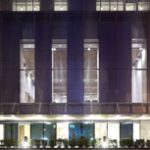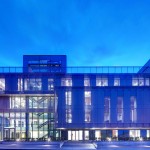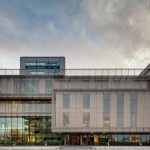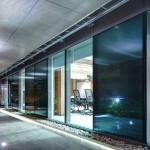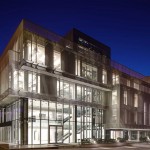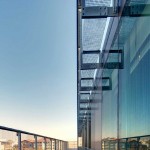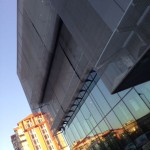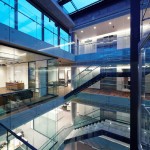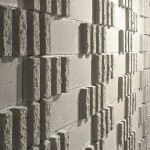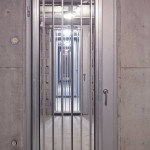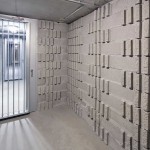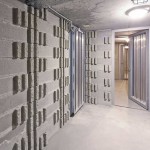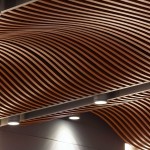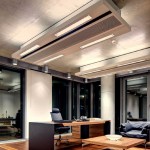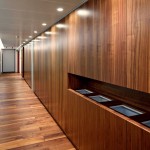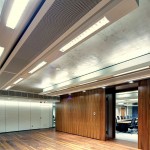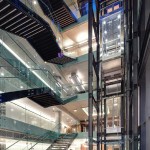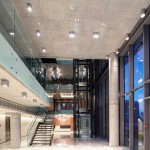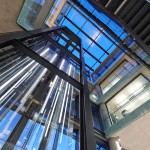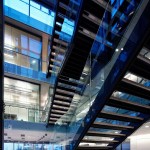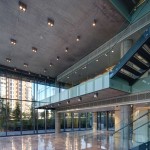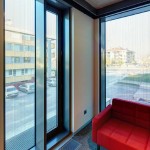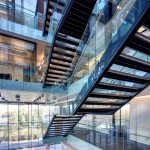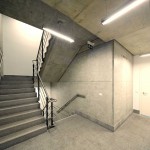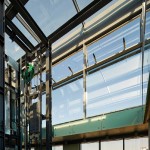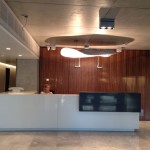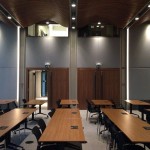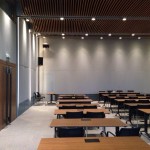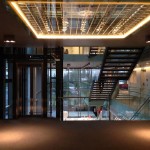Turkish Contractors Association Moved into it’s New Head Quarters
The TMB building where the construction and interiors have been finalised in October is already hosting it’s owners. The project was the result of a limited design competition with a brief that placed a great interest in leading environmental design approaches. The completed building is already regarded as a showcase of leading edge environmental design, which has raised the bar for Turkey.
The building articulates itself to reveal these functions, and is organised to reflect this as transparently as possible to the outside world. As you move up the building from ground up the increasing degrees of privacy required in the programme positions these elements in a natural hierarchy, placing at the top the most private lounge, and at the bottom the most public exhibition and conference spaces. The atrium cutting through the mass reveals on the other hand all of these functions upon entry, while connecting the building to the street level to the public domain and rising to the top of the whole it also acts as a natural ventilation device for all of the open public spaces. TCA’s basic principle of institutional transparency both conceptual and structural defines the design from the beginning.
The external skin is made of two layers; the first a classic frameless glass to glass or glass to metal facade panel system. The second is a layer of stainless steel mesh shading. The delicacy of this screen system allows occupants to remain in touch with outside views while giving a responsive density to the mesh varying according to solar orientation and therefore exposure to sunlight. During day-time the screen enables the functional masses to be articulated, while at night the internally lit building reveals the whole, becoming in an instant a kind of modern candle that glows gracefully at night. This transparency while inviting you in, allows one to retain a strong relationship with the outside world holding you within while reinforcing this relationship with the public domain.
Internally and externally an emphasis is placed on the use of natural materials, such as timber and stone, which contrast with the relatively hard surfaces of the exposed concrete surfaces. Lighting is the most critical aspect of the interiors as it is used to highlight these surfaces both directly and indirectly. Naturally all of the materials that are used are resourced locally, and chosen to minimize environmental impact. Solar panels, solar cells, bicycle racks, recycling stations, and grey water and rain-water recycling are some of the other environmentally sensitive characteristics of the building.
The LEED Platinum Certificate candidate project is an integrated design effort, coordinated down to the last detail with experimentation and study based on design / development methods and encouraging the use of local resources and materials and thus contributes to one of Turkey’s strongest and most traditional industries.






